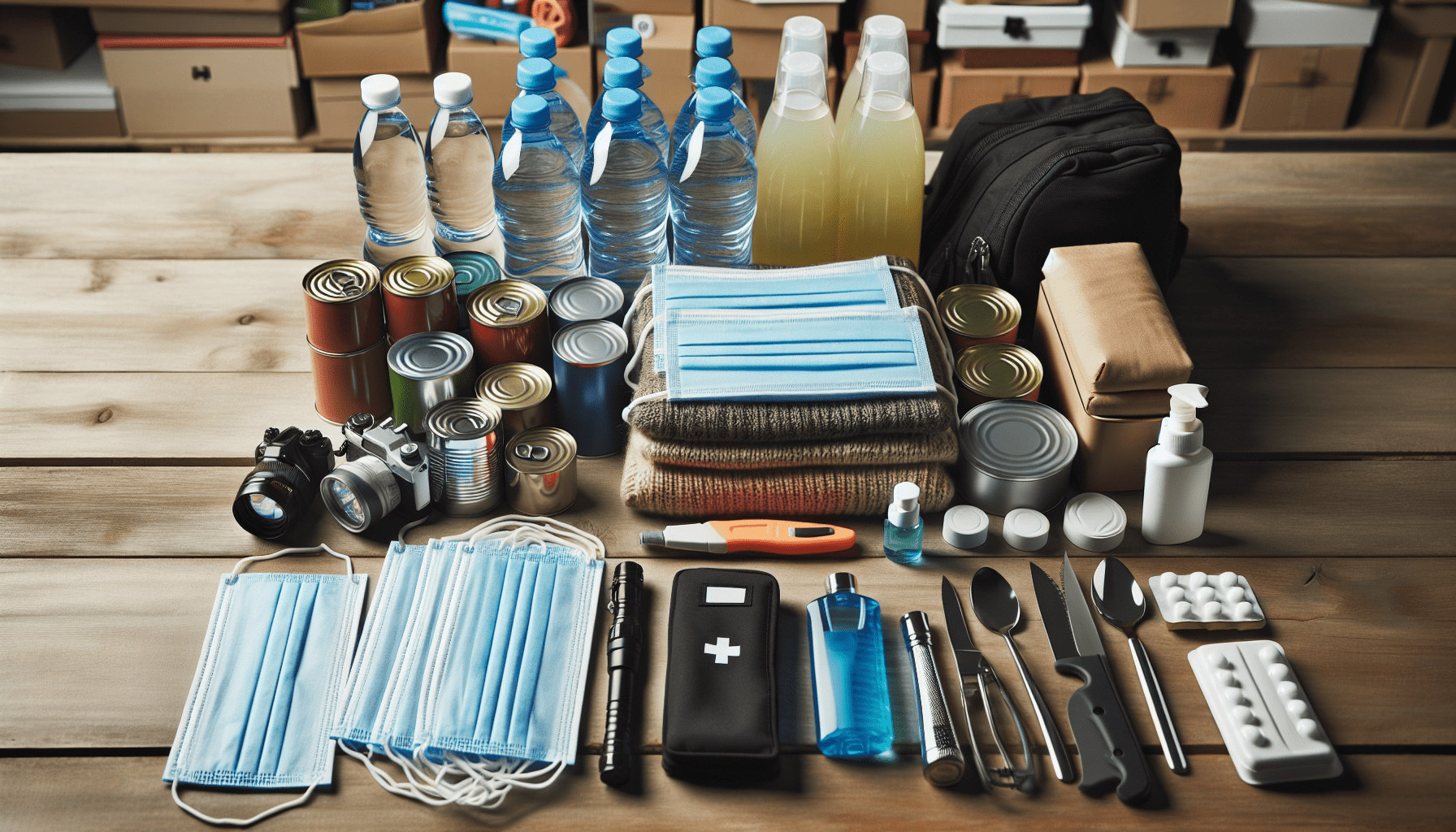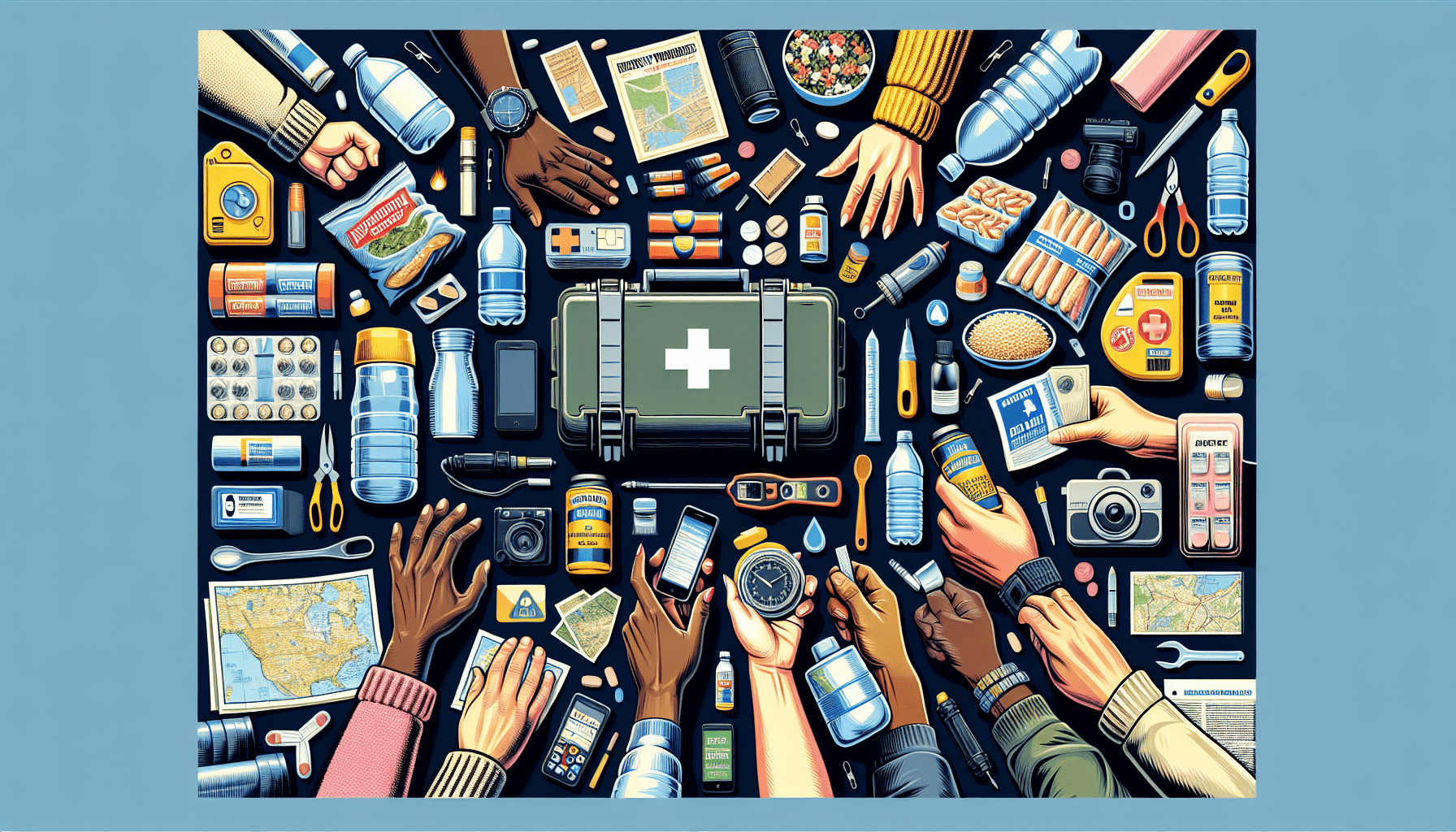Building an emergency preparedness kit is an essential step in ensuring you and your loved ones are ready for unforeseen emergencies. However, it’s important to be aware of common mistakes people often make when assembling their kits to ensure maximum preparedness. In this article, we will explore some of these common mistakes and provide you with practical tips to avoid them. From overlooking important items to neglecting regular kit maintenance, we’ve got you covered with all the helpful information you need to build a well-rounded emergency preparedness kit. So, let’s get started and ensure you’re fully equipped for any emergency situation that may arise. Building an emergency preparedness kit is a crucial step in ensuring the safety and well-being of you and your family during unexpected emergencies. However, there are common mistakes that people often make when assembling their kits, which can significantly impact their ability to effectively respond to and manage emergency situations. In this article, we will discuss ten common mistakes to avoid when building an emergency preparedness kit, so that you can be better prepared for any unforeseen events that may arise.

1. Lack of Research
Before building your emergency preparedness kit, it is essential to conduct thorough research to understand the specific needs of your area and the types of emergencies you are likely to face. Every region has its unique challenges, whether it be extreme weather conditions, natural disasters, or other potential hazards. By researching and understanding these specific needs, you can tailor your kit to ensure that you have the necessary supplies and resources to address them effectively.
2. Failure to Assess Personal Needs
When assembling your emergency preparedness kit, it is crucial to consider the unique needs of each family member. This includes taking into account any medical conditions or special dietary requirements that need to be met during an emergency. For example, if someone in your family requires medication on a regular basis, it is vital to ensure that an ample supply is included in the kit. By assessing and addressing these individual needs, you can ensure that everyone in your family is adequately taken care of during an emergency situation.
3. Neglecting Important Documents
Many people overlook the importance of including vital documents in their emergency preparedness kit. Identification and insurance papers should be readily accessible during emergencies, as they may be needed for various reasons, such as accessing medical care or filing insurance claims. Additionally, it is essential to have copies of important personal documents, such as birth certificates and passports, in a waterproof container to protect them from potential damage.

4. Overlooking Communication Tools
During emergencies, communication is vital for staying informed and connected with others. However, many people forget to include communication tools in their emergency preparedness kits. It is essential to have a portable radio or a battery-operated NOAA weather radio to receive updates and important information. Additionally, having a list of emergency contact numbers can help you quickly and easily reach out to loved ones or emergency services if needed.
5. Not Rotating Food and Water Supplies
One common mistake is failing to regularly check and replace expired food and water supplies in the emergency kit. It is essential to rotate these items periodically to ensure their freshness and effectiveness. By keeping track of expiration dates and regularly replacing food and water supplies, you can guarantee that your emergency kit is stocked with safe and reliable provisions.
6. Ignoring Personal Hygiene and Sanitation
Maintaining personal hygiene and sanitation is often overlooked when building an emergency preparedness kit. It is crucial to include items such as toilet paper, soap, and hand sanitizer to maintain cleanliness and prevent the spread of disease. Neglecting to pack personal hygiene products for each family member can lead to discomfort and potential health risks during an emergency.
7. Underestimating the Importance of Lighting
During emergencies, access to reliable lighting is essential for safety and security. Not having a reliable flashlight or a headlamp can make simple tasks difficult and potentially dangerous. Additionally, overlooking the need for extra batteries or alternative lighting sources can leave you in the dark during critical moments. It is crucial to include reliable lighting options in your emergency preparedness kit to ensure visibility and ease of movement.
8. Forgetting Medications and First Aid
For individuals who rely on prescription medications, not packing a sufficient supply can have severe consequences during an emergency. It is essential to include a generous amount of prescription medications in your emergency kit, ensuring that there will be an adequate supply for an extended period if needed. Additionally, leaving out essential first aid supplies can hinder your ability to treat injuries or illnesses effectively. Make sure to include a well-stocked first aid kit that covers a range of medical needs.
9. Neglecting Secondary Shelter Options
Having a plan and supplies for secondary sheltering is often overlooked when building an emergency preparedness kit. In situations where your primary dwelling becomes uninhabitable, having necessary items like sleeping bags, blankets, and a tent can provide you with a temporary shelter alternative. By considering and including secondary shelter options in your kit, you can be better prepared for a variety of emergency scenarios.
10. Failing to Practice and Update the Kit
Building an emergency preparedness kit is only the first step; it is equally important to regularly practice emergency drills with your family and update the kit based on changing needs or new recommendations. By practicing emergency drills, you can ensure that everyone in your family understands their role and knows how to respond effectively during an emergency. Additionally, staying informed about the latest recommendations and updating your kit accordingly will ensure that you are well-prepared for any new challenges or risks that may arise.
In conclusion, building an emergency preparedness kit is crucial for ensuring the safety and well-being of you and your family during unexpected emergencies. By avoiding common mistakes such as lack of research, failure to assess personal needs, neglecting important documents, overlooking communication tools, not rotating food and water supplies, ignoring personal hygiene and sanitation, underestimating the importance of lighting, forgetting medications and first aid, neglecting secondary shelter options, and failing to practice and update the kit, you can build a comprehensive and effective emergency preparedness kit. Remember to tailor your kit to the specific needs of your area, regularly assess and update it, and practice emergency drills with your family. With a well-prepared kit, you can face emergencies with confidence and ensure the safety of your loved ones.
